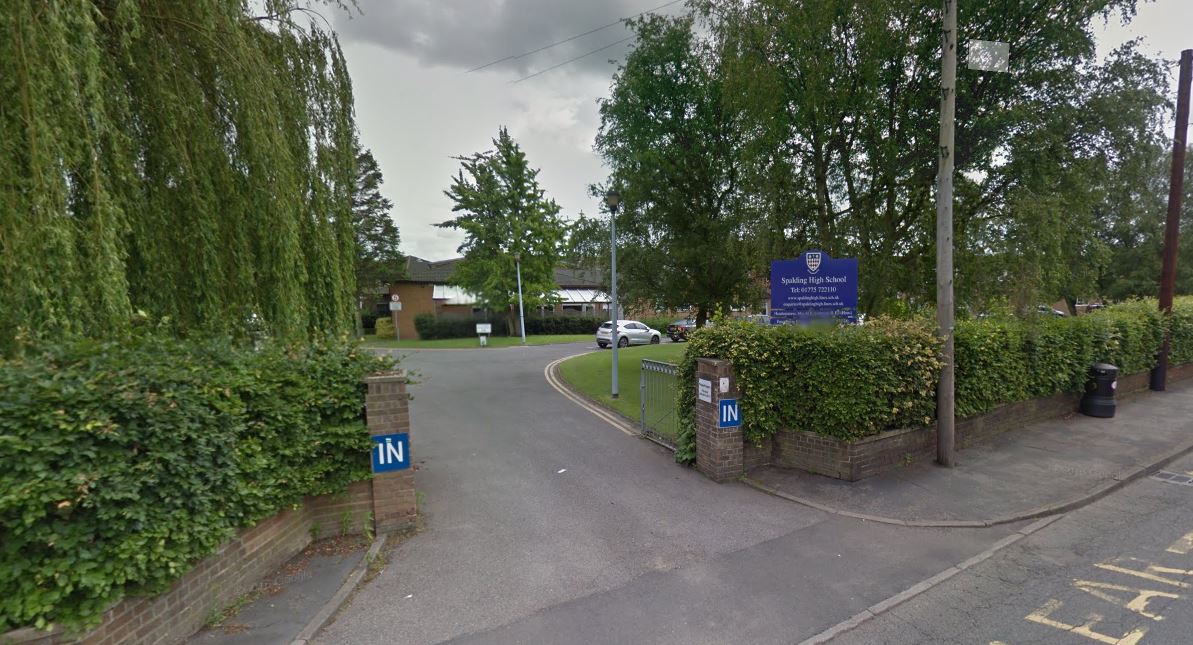In the second part, John remembers what life was like as a young boy living in Spalding during the Second World War.
I remember four plane crashes around Spalding.
A Wellington bomber crashed and burnt out to the west of Spalding, killing all the crew.
A Hawker Typhoon/Tempest fighter crashed near Beggar’s Bush Lane, the pilot reportedly killed.
A Manchester bomber, forerunner of the Lancaster, crash-landed just south of Wykeham, the crew all escaping.
The most spectacular crash was a B17 Flying Fortress. B17s went out on daytime raids.
They travelled most of the way in flights of three aircraft, and the sky over Spalding was one of the places where they assembled after taking off individually. We often watched them at it.
On one particular day, we were watching, when one of the bombers suddenly dived, then lost a wing. Plane and wing came down separately, spinning slowly all the way.
Then the tail broke away from the fuselage with the tail gunner inside.
The plane hit the ground in fields next to the cross roads of Old Fendyke Road and Fulney Drove near Weston Hills.
The main body and wing were to the west of the crossroads, and the tail to the east.
The crew were all killed, except the tail gunner, who managed to get out and parachute down.
Many of us leapt on bikes and sped off to see the crash – and perhaps get souvenirs (callous youth); but the police were there already and kept us all away.
It seems the plane’s oxygen supply had gone faulty, and the inexperienced pilot had dived to get to a lower level, but pulled out of the dive too sharply for the plane’s structure – hence the wing’s failure.
There were numbers of servicemen stationed around the town. Some of them were in the huts built around the main playing field at the Grammar School early in the war.
Various regiments were stationed there including part of the Parachute Regiment immediately before Arnhem.
We pupils made friends of the soldiers and were indulged with snacks from the cookhouse at break time.
At one time, there were Bofors anti-aircraft guns positioned on the west side of the field, and we were allowed to sit in the control seats and spin the handles that swung the guns around to aim at imaginary aircraft.
During its residency, the Parachute Regiment fixed up a section of a Horsa glider on quite high stands at the Welland Road end of the field, and the troops used to practice jumping out of it, landing with quite a thump as they hit the ground.
With so many servicemen (British and foreign) stationed in the town and district, there was an extra dimension to the town’s social life.
In fact, not all of the new residents were men. Apart from some female members of the services, there was quite a substantial number of Land Army ladies around.
Schoolchildren encountered them most when doing farm work in the holidays, when mutual good-natured teasing was often the order of the day.
Quite a few of the visitors, including the foreigners, made friends with local families, and I would guess that some of those links endured until well after the war.The wider war was a daily talking point at school. In the classrooms, before lessons began, we would gather round battle maps, bought from Woolworth’s, and argue about the progress of whatever major action was going on at the time.
If the air-raid siren went, it was out to the shelters, where lessons couldn’t be continued. We sat on forms and played cards or battleships by the light of candles or torches, and hoped that the warning would last long enough to miss the rest of the lesson.
One special feature of life, was the annual savings week, designed to boost savings, with a big ‘thermometer’ fixed to the front of the Corn Exchange to show the target and the achievement of the town.
An additional objective was to boost morale by giving everyone the chance to make a contribution. Each year there was a different one of the services named as the recipient of the benefit.
So, for instance, when it was the RAF’s turn, we might be aiming to save enough to buy a Spitfire.
There were usually special exhibits, and one year it was a captured Messerschmidt 109 fighter, which was set up in the Cattle Market.
Children could take turns to climb into the pilot’s seat and pretend to fly it.
Along with other school mates, I joined the ambulance cadets (junior section of St John’s Ambulance), which was led by Grammar School master Mr Groves. We learned first aid, and I never could remember in which order to apply the seven bandages for a thigh splint.
But we did other things too. The most exciting was when we learned to crew a fire engine, jumping off the engine at its destination, coupling to the water supply, and rolling out hoses until we fixed the nozzle and began squirting water. That was done in Westlode Street. Another time, we acted as casualties in a mock air raid, an exercise that involved several services.
I had a piece of glass appearing to go through my hand, but actually fixed with putty, and with copious ‘blood’ spread around the wound.
The ‘blood’ was red cherryade colouring from Measures, the soft drinks firm of The Crescent.
VE Day saw rejoicing crowds packing Spalding market place and strolling the town all day and, in the evening, several places in the district had huge bonfires with crowds around them well into the night.
But there was still the war in the far east and another three months until the atom bombs finally put an end to WW2.







